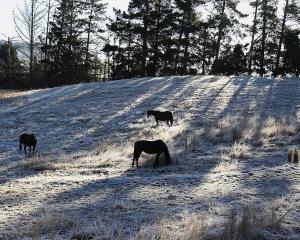Dunedin's reputation as a wet and cold city has taken a hit, with a national climate report showing the city was one of the driest in the country in 2008.
The National Institute of Water and Atmospheric Research (Niwa) climate summary says the country's weather for 2008 was a "roller-coaster year for extremes" and Otago was no exception.
It was a year with heat waves and many high temperatures recorded.
Of the main centres, Wellington was extremely wet and Dunedin very sunny and dry, the report said.
As well as Dunedin receiving less than normal rainfall, at 705mm, only 1mm more than the driest city in the country, Christchurch, the airport also recorded its second highest average maximum temperature, at 16.4degC. .
Dunedin city also recorded its third highest number of sunshine hours, 1912, since records began and Middlemarch had the third lowest rainfall of any town in the country.
Inland, Central Otago lived up to its reputation, with figures showing Alexandra, followed by Clyde, had the least rainfall in the country.
Cromwell was one of only two centres in the country to record their second warmest year on record (the town's mean temperature was 11.7degC), and highest average maximum temperature (17.9degC).
Cromwell also achieved its second highest record for sunshine hours, at 2399.
Otago towns and Dunedin also experienced record daily maximum temperatures about the 30degC mark in March, September and November.
As well, the region had record or near record lows, with extreme minimum temperatures in May, August and November when temperatures dropped below 0degC.
While the region might have had a low rainfall for the year, it was not immune to sudden downpours, with 123mm falling in the month of July in Dunedin (second highest since records began).
Snow fell in the region in August, closing roads and delaying flights, and again in September, October and November in Central Otago, in particular the Queenstown area.
High winds caused problems in June and again in September.
It was generally sunny and warm around the country, with the national average temperature 12.9degC, milder than normal.
There were near record or record sunshine totals recorded in the central North Island, parts of Hawkes Bay and the south of the South Island.
Notable climate events were the economically disastrous drought in the west of the North Island in the first part of the year, floods in the central North Island, then more floods in July and August in Marlborough and Canterbury, followed by a significant snowstorm in August and some unusual late snow in spring.







